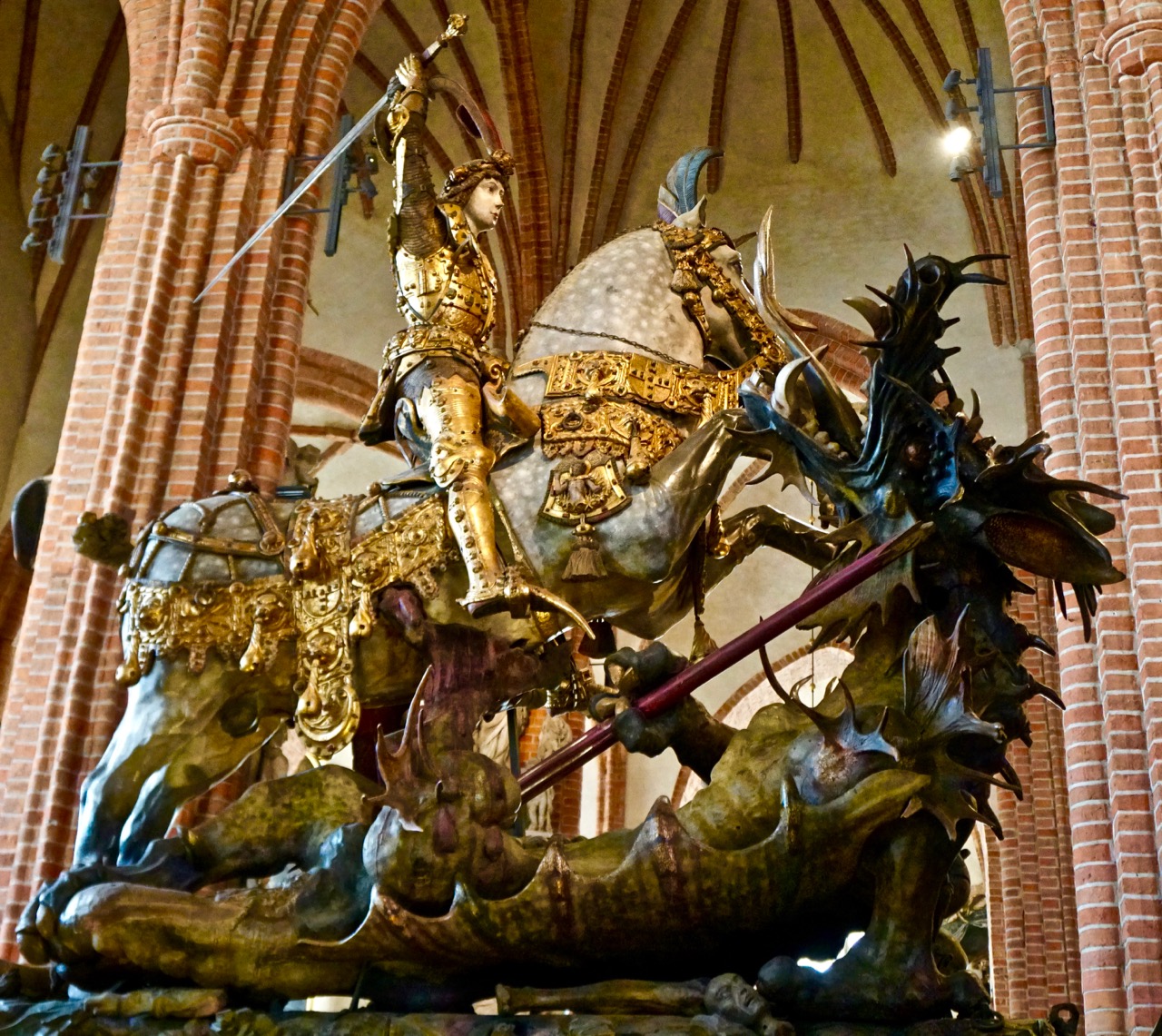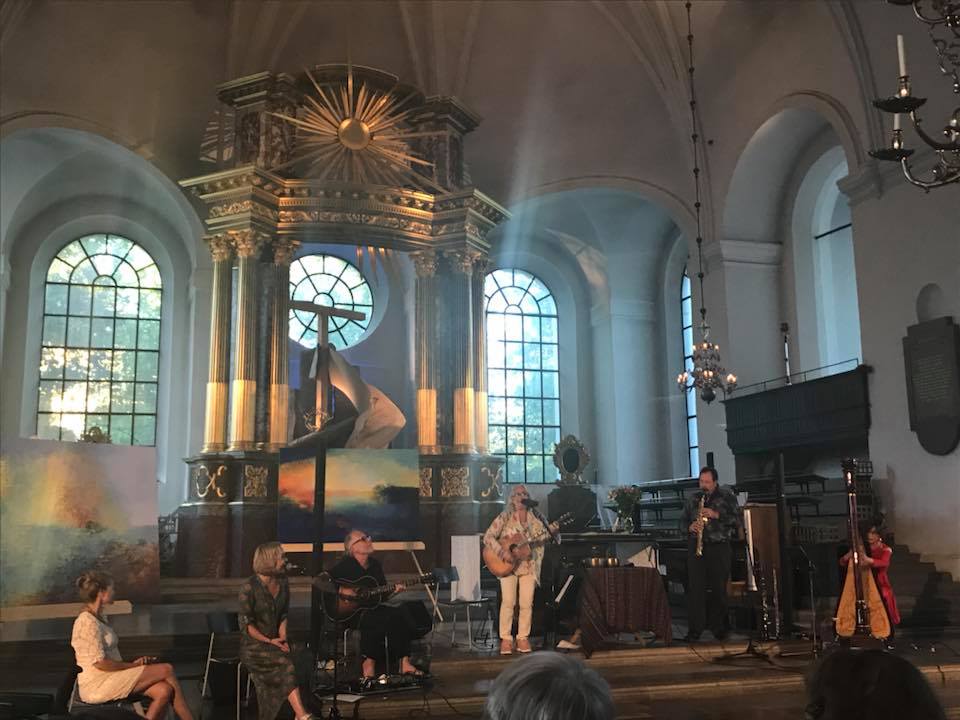Swedish Traditions versus Anti-Immigrant Populism

At first glance, it might seem that Sweden is an idealized version of California: Sweden has: universal free access to healthcare, free college education, an excellent public transportation system, a high regard for conservation and alternative energy production, a high level of female representation in government and industry, and (last but perhaps not least) little or no visible poverty. It will take a long time, perhaps generations, for California to develop and realize the liberal values embodied in Swedish society.

But even socialist-democratic Sweden has some serious challenges. Historically, Sweden has not been at war with any of its neighbors for over two hundred years. As a traditionally “neutral” country (similar to Switzerland), Sweden has been known as the “universal asylum” country, providing refuge to political dissidents of all persuasions. I personally appreciated this tradition when I first visited Sweden in 1970, part of my three-and-a-half-year absence from the US when I avoided having to participate in the Vietnam War. In recent years, Sweden has accepted more Iraqi and Syrian refugees per capita than any country in the world. (Germany has accepted an overall larger number.) But similar to Populist movements in the US and the rest of Europe, there is a grass-roots backlash against Sweden’s traditional commitment to save the world’s persecuted refugees. A political party with a Trump-like message has emerged to become the second largest political party in the country. (Sweden has half a dozen major competing political parties, ranging in philosophies from right, to left, to environmental/green.)

At the end of an eight day visit to Stockholm, I turned on the Swedish government channel, P2, to challenge my Swedish language comprehension one last time before boarding the flight back to the US in the afternoon. In a program similar to our C-Span, the final multi-party debate was being broadcast, in which alternating party representatives gave short speeches outlining their positions. I was most interested in hearing how the right-wing populist party presented itself.

The well-spoken populist party rep decried the influence of the large number of immigrants. He said: The money needed to help newly-arrived Middle-East war refugees takes money away from schools, healthcare, infrastructure, and military budgets, wasting Swedish taxpayers’ money. One example he cited was the presence of seven thousand Afghan men who don’t speak Swedish, have no marketable skills, and live off welfare while increasing crime and breeding radical Islam.
A leftist political spokesman answered him: How dare you speak of budget problems when your party wants to cut all budgets to the departments you mentioned by giving tax cuts to the billionaires. No tax cut to the rich has ever in all history resulted in improvement for refugees or the poor. And most importantly, Sweden celebrates its national values of freedom and justice for all, respect for diversity, and providing a decent standard of living for all, by taking in the refugees whose home countries are engulfed in wars.

Multiple party representatives harkened to the long-standing Swedish championing of human rights. It was stated that Sweden should not give foreign aid or do business with countries that wage war on their neighbors, such as Saudi Arabia, which uses its American-supplied weapons to bomb its neighbor Yemen, causing the world’s largest cholera epidemic, and threatening the starvation of millions by bombing the main seaport through which most of Yemen’s food enters.
I was struck while listening to the televised debate how often the Swedish politicians cited core Swedish values as the basis for their political beliefs. I felt so sad for the decline in the ideals of American values in our current political atmosphere. For example, Americans find it acceptable that prisoners at Guantanamo Bay are imprisoned for over a decade with no trials, no access to the US judicial system, and no prospect for ever being given a chance to defend themselves in court. The acceptance of torture is another blind spot in American values. Starting with Trump, there has been a resurgence of previously hidden racist expressions and actions, against Moslems, Blacks, Mexicans, and immigrants in general. Ignoring environmental concerns (by Scott Pruitt-Secretary of the Interior), undermining public education (by Betsy DeVoss-Secretary of Education), separating young children from asylum seekers and “losing” them in the system (ordered by Attorney-General Sessions), and cutting social welfare programs in order to give tax breaks to billionaires…all of these actions are contrary to traditional American values.

The US used to be proud to be a “melting-pot,” assimilating diverse immigrant cultures. At this point, Sweden is the world’s premiere melting pot. Taking three Stockholm Uber taxi rides, our drivers were two Iranians and a Syrian. At the subway ticket office, I was served by a dark-skinned-hijab-wearing woman who spoke perfect English (and of course, Swedish). And yet, during the last few years, there has been the appearance of Bulgarian street beggars, either women holding infants with a cup for donations, or Bulgarian street musicians (who are mostly excellent!). This is a new phenomenon for Sweden. Apparently, the social welfare system that takes care of immigrants is overwhelmed. I had never seen beggars on the streets in Sweden in all these years until recently.
Nonetheless, regardless of the common challenges that confront the US and Sweden, my affection for Sweden and its people continues unabated. Our eight-day recent visit was filled with meetings with old friends, including some relationships dating from my first visit in 1970. There were also new friendships, including recent Swedish Music-Hall-of-Fame inductee, singer Marie Bergman. I first met Marie only a year ago, introduced by a mutual friend. On this visit, she organized a concert for Susan and me, with her and her husband, at a grand cathedral in Stockholm which had the most amazing acoustics, comparable to San Francisco’s famous Grace Cathedral. I was also able to play a jazz gig organized by my dear friend Christian Paulin, leader of the group Mynta, with whom I toured Scandinavia and India for a decade. This jazz gig featured Christian’s sister Maria on jazz vocals. Talent is shared by the siblings.

We met once again with Ove Hagelin, the curator of one of, if not the greatest, medical library of antique books in the world. Ove has given private tours to individuals such as Bill Gates and Bill Clinton. I’m so privileged to have enjoyed three private tours with Ove. This week we went to his apartment, supposedly to chat before going to dinner. Instead, we skipped dinner altogether and spent the whole evening in his apartment, drinking wine and being shown amazing books from Ove’s private collection. Highlights included: the earliest ”book” in existence—a 3500-year-old stone with Cuneiform writing on it. Ove has an original edition of “the greatest book in history”, Darwin’s Origin of Species, as well as “the most evil book in history”, a chemical formula book from the German company that during World War One manufactured mustard gas, chlorine gas, and other chemicals used in the deadly trench warfare of WWI. He also showed us unique collections, of Cuban cigarette labels, British textile labels collected during the colonial period from Indian and Chinese textile-export companies, and private Swedish diaries which documented personal life events as well as weather spanning many decades during the 19th century. Ove is seventy-eight years old, and is having trouble finding a successor to take over his position overseeing the incredible Hagströmer Medikalisk Biblioteket housed by the famed Karolinska Institute, one of the world’s most famous medical research hospitals.

I tried my best to regain my Swedish language skills. It’s hard for an English-speaker to learn Swedish. Half the time, when I would ask someone a question in Swedish, they would notice my accent and answer in English. Unlike Germany and France where English/American movies and TV shows are dubbed in German and French, there is only sub-titling on Swedish television. This means that every day, if they turn on their televisions Swedes hear English spoken while reading the Swedish translations below. It’s a great on-going national language lesson. In fact, the high English proficiency of Swedes is so great, that being in the company of a dozen Swedes, just because one person didn’t understand Swedish (Susan) and one only understood about half (me), they all easily spoke English together for our sakes.
Stockholm is a beautiful city, my favorite in the world. The Old City (Gamla Stan) maintains its centuries’-old buildings and narrow alleyways, as well as containing the Royal Palace and Parliament. Stockholm is a city located on many islands, which are linked by extensive bridges and tunnels, as well as an efficient underground train system. It is very pedestrian friendly. Many Swedes find no reason to own a car, after all, parking spaces, gasoline, and taxes are all expensive. The cost of living in Stockholm is higher than Reno, though perhaps not as high as San Francisco or New York. And compared to those American cities, there is much less automobile traffic.

There are three national/government television channels. Though I didn’t listen this time, I remember there being three national radio stations as well. They are heavier on news and classical music, similar to our NPR-National Public Radio, than the commercial television channels. I was annoyed by the many broadcasts of American infomercials hawking household devices and cosmetics on the commercial Swedish television channels. Our hotel was nice, but a “budget” hotel, as exemplified by the fact that the television programs offered were “basic”, meaning that there were only Swedish channels, no CNN, BBC, Al Jazeera, RT, France 24, or Deutsche Welle, which I otherwise would have watched. The only benefit was that I listened to more Swedish which improved by language skills, while taking a break from American political chatter. On this visit, I made several short speeches in Swedish at our concerts, introducing specific musical pieces, as well as talking about Healing Healthcare Systems.
Thanks to my Swedish friends for making this visit a special one. I love your country!





0 Comments on Swedish Traditions versus Anti-Immigrant Populism
Join the Conversation